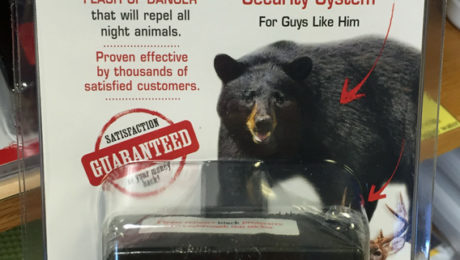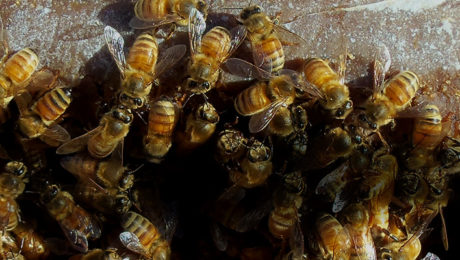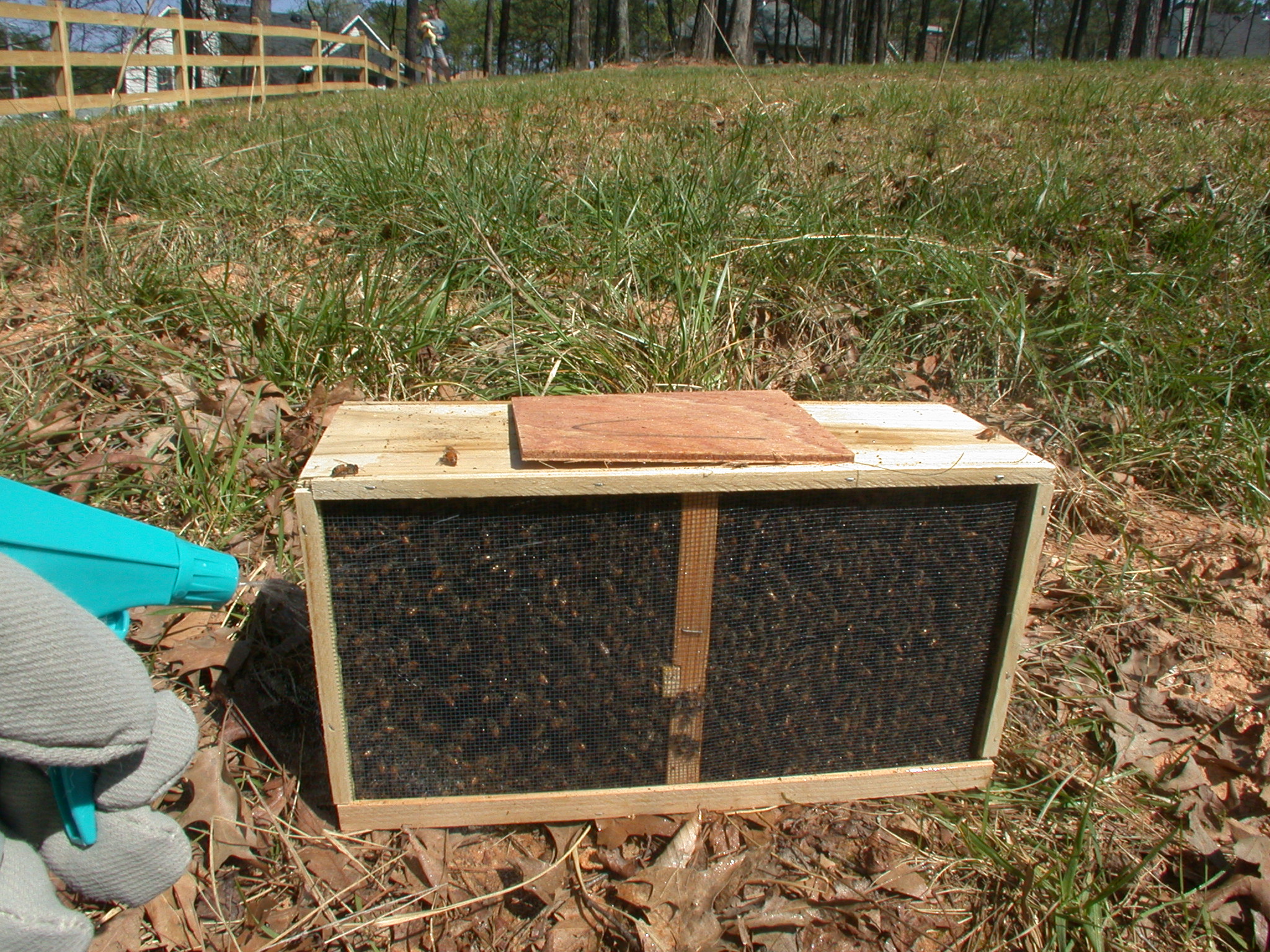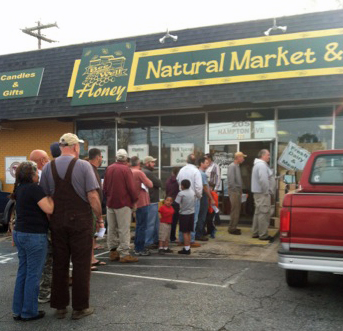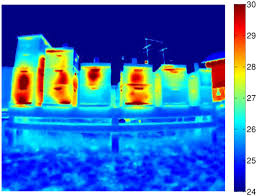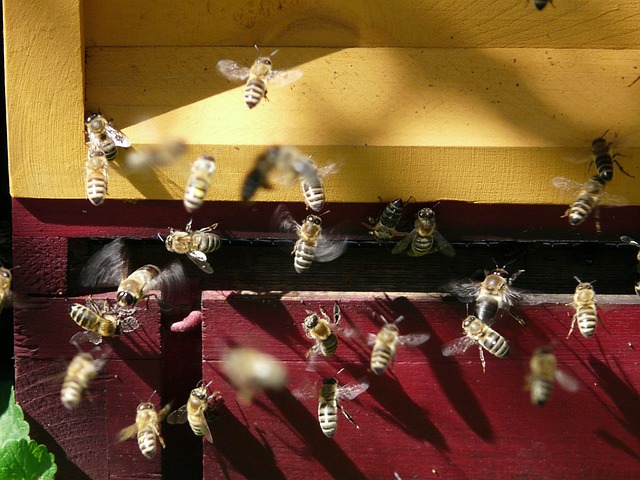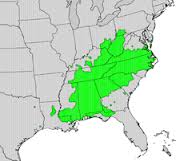Source: SC State Beekeepers
To be a successful South Carolina beekeeper you should adapt a beekeeping calendar so that you are prepared for each season. You should know the current and future weather forecast so you can protect your managed colonies if necessary. Share with other beekeepers to see they are doing the same procedures. Remember have fun!
This calendar was created by Pickens County Beekeepers.
January
During colder weather, the queen is surrounded by thousands of worker bees. This is considered the “Winter Cluster.” You should not disturb this cluster, only open the hive and work bees when the cluster is loose. Activity will be apparent on warmer days (45-50 degrees). This is when bees are taking cleansing flights. These days are acceptable for colony inspection. If feeding is needed, choose a feeding method that is near the bees so they can feed even when clustered. If the colony needs protein, a pollen patty may be placed directly over cluster of bees.
- Check food stores (pollen & honey)
- Check for proper ventilation
- Attend bee meetings
- Assemble bee equipment
- Order Bees
February
The queen still remains in the cluster and as the days become milder she begins to lay more eggs. The previous protein (pollen patty) is used to feed young larva. These bees will hatch out of the cell in 21 days. When young bees are being raised and days are warm the bees will consume more food. At this time, the cluster will begin to grow in size. A varroa mite and foulbrood inspection should be done and a proper evaluation of “queen activity”. By mid February, you should see bees carrying natural pollen into the hive. When this occurs, the queen will also begin to lay drone eggs (unfertile eggs). These drones will hatch in 24 days.
- Check food stores (pollen and honey)
- Treat for varroa mites or voulbrood if needed
- Begin a “bloom calendar” to document pollen and nectar
- Attend bee meeting
- Assemble equipment
- Order queens
March
This is the critical time for starvation. The young bees are hatching daily and the size of the colony increases by hundreds if not thousands per day. The worker bees are beginning to forage and drones begin to appear. As the days grow longer, the queen increases her rate of egg production and colonies wishing to swarm may start to raise swarm cells and colonies with failing queens may start supersedure cells. These will hatch in 16 days. Weather permitting, a few early swarms could occur in March. Food stores are being consumed at a rapid rate. Natural pollen is coming in rapidly but cold, windy weather can affect nectar sources, so a close watch on food stores is critical.
- Check honey stores
- Re-queen failing queens
- Make sure all medications are removed as specified on label
- When hive body is full of bees add Honey super
- Attend bee meetings
- Update “bloom calendar”
April
It is a steady pace, bees are roaring, new bees are humming with orientation flights and drones are on the hunt. This is when swarming is at an all time high. Swarming generally occurs right before the heavy “honey flow”. Drones are fully mature for mating and queen cells are hatching. Love is in the air. Overcrowded hives need more room so additional equipment should be placed on top of these hives to allow space for brood rearing and honey storage. The honey flow has started when bees are coming in heavy. This is noticeable by the dip that the workers make upon entering the hive entrance. They are carrying in fresh nectar to process into honey.
- Watch for swarms
- Catch the swarms
- Watch for full boxes and keep adding empty boxes
- Have additional equipment ready to house more swarms
May
The hive is working at top speed. Beekeepers hustle to keep up with the working bees by adding empty boxes underestimating how much equipment you need could cost you a honey crop and could enhance the warming impulse. Make sure to keep an empty box on top during this time of year. Swarming continues as new bees continue to overcrowd colonies.
- Watch for swarms
- Apply empty supers
- Attend bee meetings
- Update “bloom calendar”
June
Colonies that did not swarm will be boiling over with bees and the “honey flow” continues. Keep up swarm inspections and continue adding additional space as needed. Spring honey sources start to fade and a short honey dearth may happen between blooming cycles. Rain and weather conditions affect the summer nectar sources greatly. Under good conditions, the bees will continue to make honey. The start and stop honey flow will sometimes cause a few “after swarms”. The pace of honey production slows a bit and the Queen starts to lay fewer eggs. Fully capped honey supers may be removed and extracted.
- Watch for swarms
- Keep adding empty supers as needed
- Remove fully capped honey
- Attend bee meetings
- Update “bloom calendar”
July
This is a “hot and humid “month and the bees will cluster on the outside of the hive to cool off. They will continue to make honey, weather permitting, and beekeepers should start to remove ripe honey. Remember to leave enough honey for the bees. If you remove all the honey, the stress level of the bees elevates and could cause an unhealthy colony. If weather conditions are too dry, collapse could occur due to starvation. Remember to keep enough empty room for the bees when they come inside. Perform a queen check and mark colonies for re-queening.
- Remove honey
- Leave enough honey for the bees (at least one full super)
- Keep at least one empty super on top
- Extra ventilation
- Order queens
- Attend state beekeepers association meeting
- Update “bloom calendar”
August
The colony’s growth is diminishing in numbers and the honey flow is coming to an end. When bees stop producing honey, remove all honey supers. (Except one!) Remember to leave one full super of honey for the bees. This is what they will live on during the winter. No more chance of swarming and the honey dearth will appear. Weaker colonies may get robbed of their honey so entrance reducers should be placed on weak colonies or move weak colonies to another bee yard. The varroa mite levels are high now and an evaluation of Mite levels should be maintained during this time of year. If you determine mite levels are too high, an integrated pest management (IPM) practice should be added to your list of beekeeping chores. Some colonies may need food and some small clusters may need additional frames of brood to increase bee numbers.
- Check for failing queens and re-queen.
- Remove honey and remove empty supers
- Check for mites (medicate if needed)
- Feed weak colonies (pollen and syrup)
- Equalize colonies
- Attend bee meetings and purchase equipment
- Update “bloom calendar”
September
Hive population continues to drop and drones start to disappear. The queen is laying fewer eggs. Some or all colonies may need feeding. Some or all colonies may need re-queening. Pollen should only be fed dry in outside feeders or mixed in syrup. No patties should be fed due to increased small hive beetle activity. Look out for robber bees-reduce the entrance.
- Feed if necessary (especially if re-queening) pollen and syrup
- Equalize colony strength
- Continue mite evaluations
- Attend bee meetings
- Update “bloom calendar”
October
Continue to combine weaker colonies and make “double sure” all queens are accepted and present. Queenless colonies should be combined with queen-right colonies. This is the time of year to feed as much syrup as you can get them to take so they can insulate the brood nest with honey. Replace broken equipment and make sure they have good tight hives to survive the cold winter months. Not much bee activity. Close down the hive entrance to help protect unwanted intruders.
- Combine the weak
- Equalize bees
- Repair or replace bad equipment
- Attend bee meetings
- Review “bloom calendar” for next season
November
Even less bee activity and cold weather will send the bees back into a cluster. On warm days watch for bees to fly out to make cleansing flights and forage for pollen. Keep the entrances just small enough for two bees to enter.
- Attend bee meetings and bring a friend
- Make sure equipment is stored properly to stop wax moth damage
- Feed syrup when the temperature allows (45-50 degrees)
- Talk to experienced beekeepers for winter preps
- On warm days bees will forage for pollen
- Pay state and local dues
December
The bees are in a tight cluster, so do not open colonies. There is nothing you can do except hope you did everything right. On warm days, visit your hives for entrance inspections. Make plans for new bee food in your apiary.
- Read a good beekeeping book
- Pay your state and local dues
- Give honey as a gift
- Continue to assemble equipment
- Order bees
- Plan for the New Year!
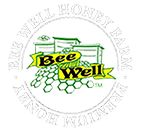


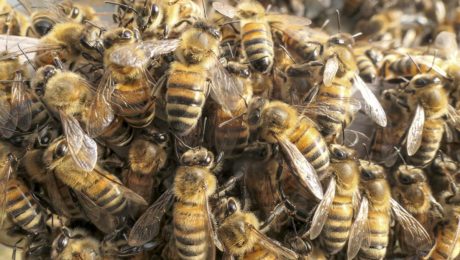


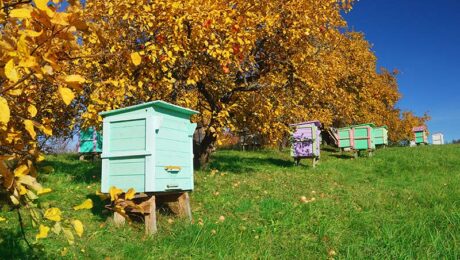

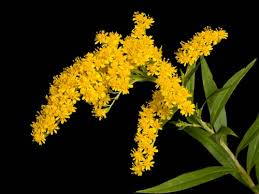
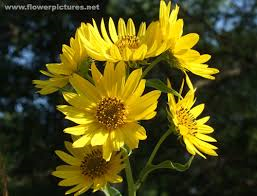

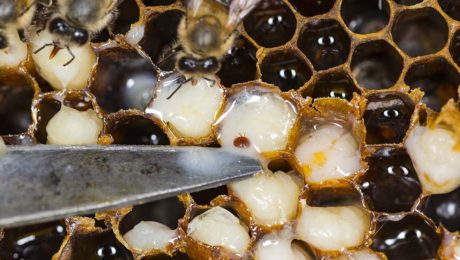


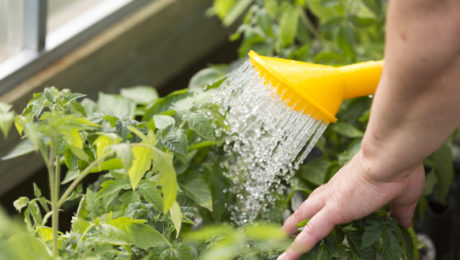

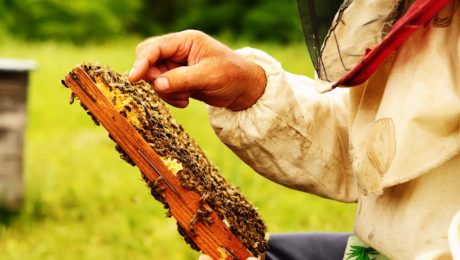
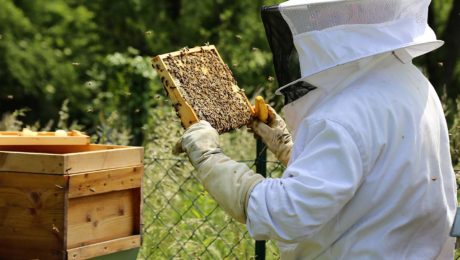



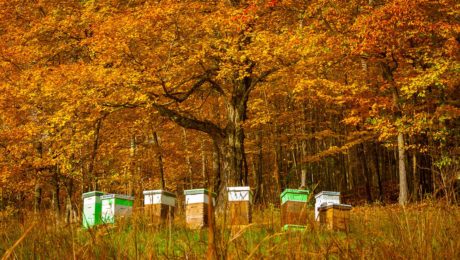




 Emeritus Professor of Entomology & Wildlife Ecology, Univ of Delaware, & Affiliate Professor, Dept Horticulture, Oregon State University. He as has 50 years beekeeping, 40+ years teaching beekeeping, doing bee extension and bee research at Cornell (1966-1970), University of MD (1970-1981) and University of DE (1981-2009). He is joining our spring meeting after spending 5 months in Bolivia where he keeps 8+ colonies of Africanized bees and teaches beekeeping at University de San Simon and among communities in the Andes Mountains. Following retirement, he moved from the east coast to Portland, OR to be closer to (and spoil) grand kids while continuing to write, talk about bees, and teach beekeeping. He as 5 backyard colonies in Tigard, OR.
Emeritus Professor of Entomology & Wildlife Ecology, Univ of Delaware, & Affiliate Professor, Dept Horticulture, Oregon State University. He as has 50 years beekeeping, 40+ years teaching beekeeping, doing bee extension and bee research at Cornell (1966-1970), University of MD (1970-1981) and University of DE (1981-2009). He is joining our spring meeting after spending 5 months in Bolivia where he keeps 8+ colonies of Africanized bees and teaches beekeeping at University de San Simon and among communities in the Andes Mountains. Following retirement, he moved from the east coast to Portland, OR to be closer to (and spoil) grand kids while continuing to write, talk about bees, and teach beekeeping. He as 5 backyard colonies in Tigard, OR.
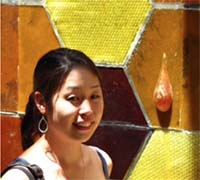 Originally from California, Jennifer has been studying honey bees for over 15 years. She received her PhD at the University of California at Davis, was a postdoctoral researcher at Purdue University and has studied honey mites, and genomic imprinting. Since joining Clemson University as SC’s Apiculture Specialist in 2014, she has been working on research projects related to honey bee genetics and pesticide exposure in ornamental landscapes. Jennifer has also been organizing and speaking at scientific and stakeholder meetings, guest lecturing, participating in field days ,and holding training programs and outreach events.
Originally from California, Jennifer has been studying honey bees for over 15 years. She received her PhD at the University of California at Davis, was a postdoctoral researcher at Purdue University and has studied honey mites, and genomic imprinting. Since joining Clemson University as SC’s Apiculture Specialist in 2014, she has been working on research projects related to honey bee genetics and pesticide exposure in ornamental landscapes. Jennifer has also been organizing and speaking at scientific and stakeholder meetings, guest lecturing, participating in field days ,and holding training programs and outreach events. Lawrence Connor was born in Kalamazoo, Michigan and earned his doctorate in honey bee pollination of crops at Michigan Sate University. He has worked as Extension Bee Specialist at The Ohio State University, President of Genetics Systems, Inc. (which produced tens of thousands of instrumentally inseminated queens honey bees as well as the Starline and Midnite breeding stock), and now owns and operates Wicwas Press, specializing in publication of quality bee books. He relocated (from Connecticut) back to Michigan in April 2007 to continue growth of his publishing and writing activities. He has edited and published over two dozen books and recently written: Increase Essentials (2006), Bee Sex Essentials (2008), Queen Rearing Essentials, Bee-ssentials: A Field Guide, Swarm Essentials (with Steve Repasky), Honey Edition, Queen Rearing Essentials Second Edition and Mating Biology of honey bees (with G. and N. Koeniger and J. Ellis). Connor is a regular contributor to The American Bee Journal and to Bee Culture Magazine. He travels extensively and lectures on a wide range of subjects concerning honey bees, bee breeding, pollination and colony management.
Lawrence Connor was born in Kalamazoo, Michigan and earned his doctorate in honey bee pollination of crops at Michigan Sate University. He has worked as Extension Bee Specialist at The Ohio State University, President of Genetics Systems, Inc. (which produced tens of thousands of instrumentally inseminated queens honey bees as well as the Starline and Midnite breeding stock), and now owns and operates Wicwas Press, specializing in publication of quality bee books. He relocated (from Connecticut) back to Michigan in April 2007 to continue growth of his publishing and writing activities. He has edited and published over two dozen books and recently written: Increase Essentials (2006), Bee Sex Essentials (2008), Queen Rearing Essentials, Bee-ssentials: A Field Guide, Swarm Essentials (with Steve Repasky), Honey Edition, Queen Rearing Essentials Second Edition and Mating Biology of honey bees (with G. and N. Koeniger and J. Ellis). Connor is a regular contributor to The American Bee Journal and to Bee Culture Magazine. He travels extensively and lectures on a wide range of subjects concerning honey bees, bee breeding, pollination and colony management.


